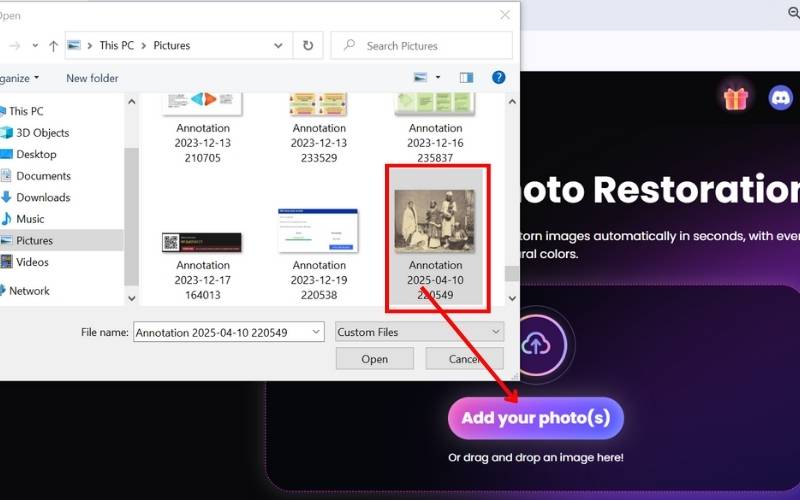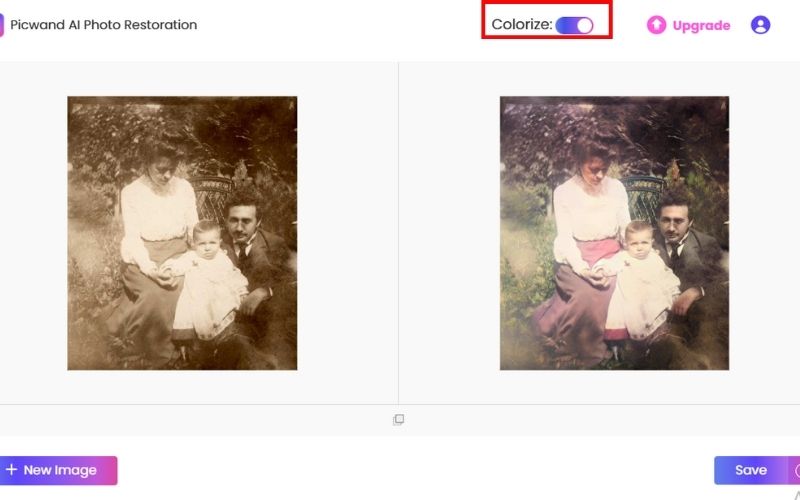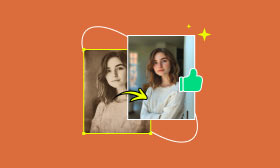How to Protect Prints in Glass from Fading: The Essential Guide to Preservation
Glasses, frames on high shelves, and even framed photos and prints are tiny relics of times past spent in the company of loved ones that can add warmth or nostalgia to a room. However, light and other environmental factors can fade these prints, and their beauty is short-lived. This guide will share the steps to prevent your photos and artwork from breaking down, including how to recover long-faded memories. In this article, we’ll describe why prints fade and how to properly preserve them, using techniques such as UV-filtering glass and light damage prevention, as well as the best methods for keeping your framed prints clean and retaining the maximum quality of the print. Also, learn about a new tool to restore faded pictures to their original glory. See how you can keep your prints for years to come!
Contents:
Part 1. Reason Why Picture is Fading
Have you ever noticed your colorful photo print turned pale or not as in-focus as before after a long time? That’s a common problem; knowing the reasons is the first step toward saving your memories. There are several reasons why prints fade, and understanding why a print is fading will help you take preventative action before it is too late.
Here are some of the main reasons why your prints are fading:
1. Light (Particularly UV Light)
Continuous light exposure, specifically direct sunlight and fluorescent lighting, is one of the worst features that fades over time. UV rays break down the chemical structure within the ink or pigments in your photos, causing the colors to wash out over time.
2. Sensitivity to Changes in Humidity and Temperature
Fading can also result from heat and moisture. Humidity is another enemy—the photos may cling to the glass in high humidity and possibly develop mold, while flames can ruin the paper and ink.
3. Bad-quality Printing or Paper
Ink and Paper Matter. The kinds of inks and paper: Images printed with less ink or non-archival paper might fade more easily. Whether materials last or not, fading can happen far more quickly.
4. Chemical Exposure
Household cleaners, air pollutants, and even off-gassing from framing materials may further harm your photos when sealed inside a glass frame.
The next step is knowing what protects glass prints from fading so you can get ahead of the learning we will discuss next. Join us as we explain how to prevent this fading, helping your memories remain vivid for generations.
Part 2. How to Protect Prints in Glass from Fading
While it's true that just putting your most precious images or art prints behind glass offers a level of protection, it doesn’t always provide enough. Glass can provide some protection. However, things like UV light, dust, and moisture can still come in and do irreversible damage. That's why it's essential to go the extra mile to be sure that your prints remain as bright and vivid as the day they were made. It is a useful and efficient method for protecting your photographs behind glass. You’ll find some great tips that will help your shoes last longer. One of the best investments you can make is a UV protection picture frame that can block harmful light rays, causing colors to fade too quickly. Here are the best ways to protect your glass-framed prints: Preventing exposure to light damage, using UV-filtering glass, and knowing how to clean and maintain glass.
Method 1. Prevent Light Damage
One of the worst offenders is exposure to light, especially sunlight and bright indoor lighting. Light, over time, could break down the chemical structure of photographic prints and cause them to lose their vibrancy and detail. Even prints mounted under standard glass aren’t protected from this kind of damage unless they provide extra protection. Protect your prints as much as possible from light damage by hanging your framed prints in an area that does not get direct sunlight. Pick places in your home or gallery that do not get much UV light, such as interior walls or dim, dark-lit areas. Better get a UV-protected picture frame. These special frames will block out a high percentage of the ultraviolet rays that cause fading. The combination of smart placement and UV-protective framing will limit the potential for light-induced damage and keep your prints looking as bright as the day you framed them for decades!
Method 2. UV-Filtering Glass
UV-filtering glass is an effective and simple approach for those who want to protect their prints. Although standard glass does provide protection, it does little to screen out the open-ended ultraviolet rays that can ravage photographs over time. These ultraviolet (UV) rays will yellow, fade, or wash out your images, especially when exposed to sunlight or strong artificial light. That’s why a UV-protective glass frame goes a long way. They are a unique substance or film that blocks up to 99 percent of dangerous UV radiation. They shield your prints from aesthetic forces while extending their longevity without changing their appearance. An immediate measure you can address yourself to protect your works from fading and ambient abrasion at home is with a frame featuring UV-protective glass. It’s essential if you have any interest in your photo library.
Method 3. Proper Cleaning and Maintenance
No amount of the best UV protection will keep your prints pristine forever; regular care is essential. Cleaning and care of the glass itself and then the frame will help to ensure it survives for a long time Dust, moisture, and grime can accumulate over time, creating an atmosphere that can disturb the photo inside or even elicit mold growth. Begin with a soft microfiber cloth to lightly dust your glass frame. Don't use paper towels or rough materials, which might scratch the surface. Apply a non-ammonia glass cleaner to the cloth (not the glass itself) and use tiny, circular strokes to buff away more stubborn messes.
Sprain your frame seals from time to time. If you see any sign of moisture or air leaking, reseal or replace the frame. Staying out of high-humidity rooms, including bathrooms and kitchens, will prevent fading and warping over time. If you perform this minor maintenance regularly, you will have an additional layer that will keep your memories clear and vivid for many years, so you can avoid using the AI tool to restore the old photos .
Part 3. Bonus: Picwand AI Photo Restoration to Restore Faded Pictures
Even with the best preservation methods, time and exposure can still fade your prints. That’s where digital restoration steps in. If you're looking for an easy, fast, and effective way to breathe new life into your old or faded photos, Picwand AI Photo Restoration is the tool to try. It's an AI-powered solution to restore photo quality with just a few clicks. No advanced editing skills are needed. brings back lost colors, sharpness, and detail, helping you preserve your memories in digital form.
Main Features of Picwand AI Photo Restoration
• Automatically detects fading, scratches, and imperfections to restore original quality.
• No need for manual retouching. Just upload and let AI do the work.
• Revives dull or washed-out colors in black-and-white and colored photos.
• Restored images are enhanced and saved in high quality for printing or digital archiving.
• No need to install software. Restore images directly from your browser.
Steps to Restore Faded Pictures Using Picwand AI
Step 1. Open your browser and go to the Picwand AI website . Click the Add Your Photo or Drag & Drop area to select your faded photo from your device.

Step 2. Once uploaded, it will automatically analyze and restore your image in seconds. To add color to your faded photo, switch on the Colorize.

Step 3. Review your image to ensure the restoration meets your expectations. Then, click Save to save the restored, high-quality image to your device.

Part 4. FAQs about Protect Prints in Glass from Fading
Will regular glass protect my print from fading?
No. Standard glass offers little to no UV protection. If you're serious about preservation, invest in UV-protective glass frames.
What should I do if my print has already faded?
Consider using a digital restoration tool like Picwand AI Photo Restoration to digitally restore the sun-faded photo, preserving its memory even if the original has deteriorated.
Does UV-filtering glass affect the clarity of the display?
Not at all. Modern UV-filtering glass is crystal clear and designed to protect without altering the visual appearance of your print.
Conclusion
Knowing what causes things to fade and taking steps to prevent it, like keeping the item out of direct sunlight, hanging it up in a UV-protection picture frame, and properly caring for the items, are key. For old images that are already faded, tools like Picwand AI Photo Restoration can revive them digitally. Preserving your prints isn’t just about saving them; it’s about honoring the memories they represent.
AI Picwand - Anyone Can be A Magician
Get Started for Free









